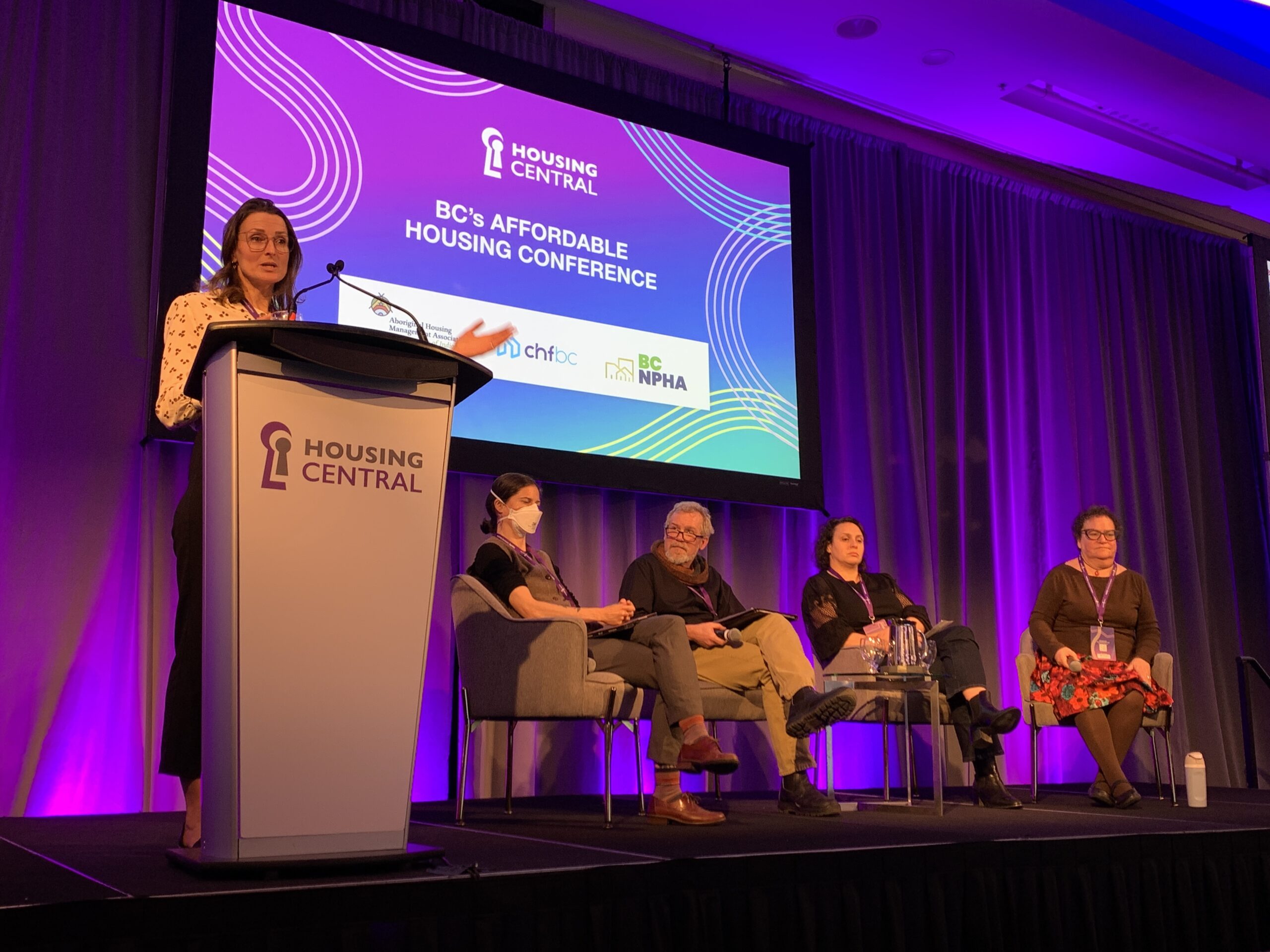On June 20, 2025, Balanced Supply of Housing and BC Society of Transition Houses took part in the NEHA panel oral dialogue, bringing critical insights and a deep sense of urgency to the conversation about gender-based violence, housing, and human rights. Their message was clear: Canada’s housing system is failing survivors of gender-based violence—and we have both the knowledge and opportunity to fix it.
Why We Were There
The Balanced Supply of Housing’s research manager, Dr. Alina McKay and BC Society of Transition Houses (BCSTH) Executive Director, Amy FitzGerald, were invited to participate in the Neha panel after submitting a body of research outlining a harsh reality: survivors of gender-based violence — overwhelmingly women and gender-diverse people — are being left without safe, affordable housing.
In a system where transition and second-stage housing are at capacity, and where non-profit and affordable rental units are chronically underfunded, survivors and their children are being forced back into unsafe environments. It doesn’t have to be this way.
At this moment in Canadian history, we have an opportunity to invest in proven, community-rooted housing solutions that prioritize the needs of women and families. We joined this dialogue to advocate for meaningful, long-term investments in the anti-violence sector and in non-profit housing, with a focus on design that centers women’s lived experiences.
Progress—And How Far We Still Have to Go
Since the passage of the National Housing Strategy Act, the federal government has committed to addressing the right to housing. And yes, there has been movement: the March 2024 progress report cited 5,491 housing units (new builds and repairs) for survivors of gender-based violence.
But these numbers represent just a fraction of the need—only 8% of new units and 2.1% of repaired units that have been committed to date under the NHS. Each part of the system—from shelters to permanent housing—is stretched beyond capacity, and the impacts are especially severe for women with disabilities and racialized women.
For instance, the 2018 Survey of Safety in Public and Private Spaces found that nearly 63% of women with disabilities had experienced homelessness due to fleeing violence—significantly higher than for women without disabilities. In Metro Vancouver, the number of families on the waitlist for 2-bedroom social housing units due to family violence has more than tripled in recent years.
Even when survivors can access transition housing, many are forced to return to the homes they fled due to the lack of permanent options. For many, the private market is no refuge either. High costs, low vacancy rates, and rampant discrimination—particularly for Indigenous women, women with disabilities, single mothers, and women with children—block access to safety.
The Right Supply, Not Just More Supply
Too often, housing policy focuses on the quantity of supply rather than the quality and purpose of that supply. Recent CMHC data shows that Canada would need to more than double annual housing starts to meet future demand. But we’re unlikely to see a building boom in today’s economic climate of high interest rates and unstable markets.
What we can do is make smarter investments: public land partnerships, non-profit development, and mixed-income communities that are built with care—and with purpose. That means homes that are:
- Truly affordable (no more than 30% of income)
- Centrally located and near vital services like schools, parks, transit, and child care
- Built and managed by non-profit organizations committed to long-term affordability and community well-being
This is how we create the right supply—not just more units, but homes that meet the needs of those who need them most.
What Needs to Happen
In the oral hearing we outlined a clear roadmap for action. Here’s what governments must do to uphold the right to housing and protect survivors of gender-based violence:
- Invest long-term in transition housing and the anti-violence sector
- Expand and fund non-profit housing supply with a focus on affordability and permanence
- Create priority placement programs for women fleeing violence—and ensure policies support family autonomy and choice (e.g., replace outdated National Occupancy Standards when allocating social affordable housing)
- Design family-friendly housing that accommodates diverse households, including women with disabilities and multigenerational families
- Strengthen anti-discrimination protections, especially for Indigenous, disabled, and single-parent households so that they can access rental housing
- Fund acquisition programs to preserve affordability in existing rental stock
- Introduce stronger eviction protections, including child-focused policies and alternatives to eviction
Imagining a Better Future
The vision shared during the panel was bold, grounded, and absolutely achievable.
This vision includes a future where programs like Canada Builds transform public land into thriving, non-profit communities. A future where housing is not a commodity but a foundation for safety, stability, and dignity—especially for women, Two-Spirit, Trans, and gender-diverse people facing violence and discrimination.
Housing can be a tool not just to house families, but to rebuild them.
Final Message to Decision Makers
If one message could be communicated from this dialogue to decision makers, it is this:
You have the power to shape a housing system that truly meets the needs of women and children fleeing violence. It’s time to stop talking about supply in the abstract and start investing in the right supply.
We already know what works—now we must act.
To learn more about gender-inclusive housing design and the work being done in this space, visit the Women-Centred Design Toolkit and see other research outputs on our Re-Evaluating National Occupancy Standards project page.
The Balanced Supply of Housing is a SSHRC-CMHC funded community-based research project at UBC that focuses on land use and housing financialization across Vancouver, Toronto and Montreal.




